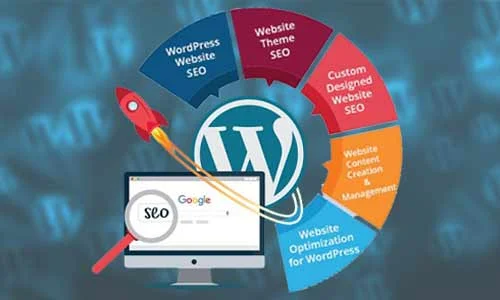In an age where startups are booming and competition is fierce, understanding the lean startup methodology is crucial for anyone looking to enter the business world. This article will demystify the concept, guiding beginners through its origins, principles, and practical applications.
What Is a Lean Startup?
The lean startup is a business approach designed to create and manage startups more efficiently. It emphasizes the importance of learning what customers truly want quickly and adapting products accordingly, minimizing waste and ensuring that the business remains agile and innovative.
The Genesis of Lean Startup
Who Invented It?
The lean startup methodology was developed by Eric Ries, an entrepreneur and author, who introduced the concept in his book “The Lean Startup” in 2011. Ries’s experience in failing and succeeding startups led him to formulate a method that could save resources and time.
When Did It Emerge?
Though the term was coined in 2011, the lean startup’s principles were in practice slightly earlier, around the late 2000s. Ries built upon the lean manufacturing principles from Toyota, applying them to startup development.
The Core Principles of Lean Startup
How Does It Work?
The methodology revolves around a few key principles:
- Build-Measure-Learn: The fundamental cycle at the heart of the lean startup. Entrepreneurs should turn their ideas into products quickly to measure how customers respond and then learn whether to pivot or persevere.
- Minimum Viable Product (MVP): This is about creating a product with the least amount of features necessary to attract early-adopter customers and validate a product concept early in the development cycle.
- Validated Learning: Entrepreneurs should prioritize learning over just making money. This involves testing assumptions about the business, measuring how customers respond, and then learning whether to adjust the approach.
- Innovative Accounting: To improve, startups must focus on how they measure progress, set up milestones, and prioritize work. This ensures that the company is moving forward based on learned insights about customers.

Why Lean Startup?
Adopting the lean startup methodology can offer numerous benefits:
- Efficiency: Saves time and resources by eliminating unnecessary work and focusing on what truly matters to customers.
- Flexibility: Encourages pivoting, which allows startups to change direction swiftly if their initial concept doesn’t hit the mark.
- Customer-Centric: Focuses on customer feedback and engagement, leading to products that people actually want.
- Risk Reduction: By validating assumptions early, it reduces the risk of failure.
Implementing Lean Startup in Your Business
How to Begin?
Starting with the lean startup methodology involves a few key steps:
- Identify Your Hypotheses: What assumptions are you making about your product and your customers? These need to be tested.
- Build Your MVP: Develop the simplest version of your product that you can use to test your hypotheses.
- Measure and Learn: Collect data on how customers use your MVP and whether it meets their needs. Learn from this and decide whether to pivot (change your product) or persevere (keep improving the same product).
- Iterate: Repeat this cycle, each time refining your product based on customer feedback.
Success Stories: Lean Startup in Action
Many successful companies have used the lean startup methodology to grow and thrive. Dropbox, for instance, started with a simple video explaining its proposed service to validate customer interest before building the full product. This approach helped them save significant resources and ensured a market for their service.

Navigating Challenges with Lean Startup
Despite its many advantages, implementing the lean startup methodology is not without its challenges. Understanding these hurdles and how to overcome them is crucial for any entrepreneur looking to follow this path.
Overcoming Common Obstacles
- Resistance to Change: Traditional business models emphasize extensive planning and development before launching. Shifting to a lean startup approach requires a cultural change, embracing failure as a learning opportunity.
- Finding the Right Balance: While pivoting is a cornerstone of the lean startup, it’s important to avoid constant direction changes that can lead to confusion and loss of focus. Entrepreneurs must learn when to pivot and when to stay the course.
- Managing Expectations: Stakeholders accustomed to traditional metrics of success may need education on the lean startup’s focus on learning and validated learning as measures of progress.
Expanding the Lean Startup Beyond Tech
While the lean startup methodology has its roots in the tech industry, its principles are universally applicable. Businesses in manufacturing, services, and even non-profits can benefit from its customer-centric and iterative approach to product development.
Application Across Industries
- Manufacturing: Applying lean principles to prototype development and user feedback can significantly reduce the time and cost associated with bringing a new product to market.
- Services: Service-based businesses can use MVPs in the form of limited-time offers or trial services to gauge customer interest and feedback.
- Non-profits: Even non-profit organizations can apply lean startup methodologies to better meet their constituents’ needs with minimal resources.

Tools and Resources for Lean Startup Practitioners
A variety of tools and resources are available to help entrepreneurs implement the lean startup methodology effectively:
- Lean Startup Machine: Workshops and tools designed to help entrepreneurs apply lean startup principles.
- Business Model Canvas: A strategic management template for developing new or documenting existing business models.
- Customer Development Tools: Software and platforms that facilitate customer feedback collection and analysis, such as surveys, A/B testing, and analytics.
The Future of Lean Startup
As the business landscape continues to evolve, the principles of the lean startup methodology remain relevant. Its focus on customer feedback, iterative development, and flexible business models positions it as a critical strategy for navigating the uncertainties of the 21st-century marketplace.
Staying Relevant in a Changing World
Adapting to new technologies, market trends, and consumer behaviors is essential for businesses. The lean startup approach, with its emphasis on agility and responsiveness, provides a framework for this adaptation. Take the example of cooperativa de ahorro y credito republica dominicana that make big changes.
Key Takeaways
The lean startup methodology offers a blueprint for launching and growing businesses in a way that maximizes resources and focuses on what truly matters to customers. By embracing its principles of build-measure-learn, MVP development, validated learning, and innovative accounting, entrepreneurs can navigate the complex startup landscape more effectively.
Conclusion: Embracing Change and Innovation
The lean startup methodology is more than just a set of practices; it’s a mindset that encourages continuous innovation, flexibility, and a deep focus on what customers really want. By embracing this approach, new businesses can navigate the uncertainties of startup life more effectively and carve out their path to success.
Understanding and implementing the lean startup principles can significantly impact how new ventures are launched and managed. It’s an indispensable guide for anyone looking to make their mark in the business world without wasting precious resources.





